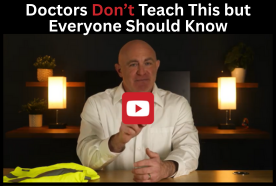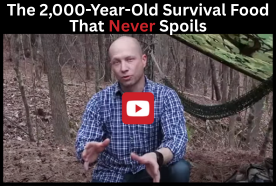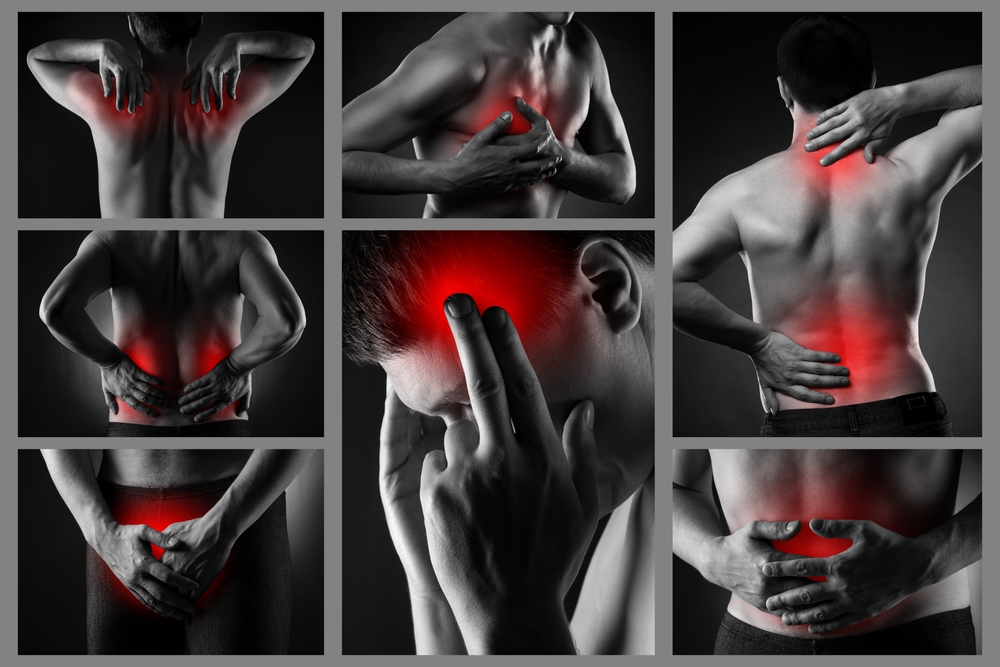Train to Respond
Dr John Leach published the 10/80/10 rule to describe how people respond to disasters in Survival Psychology. (Leach, 1994) Paraphrased, it says that about 10% of the population is able to gather their wits and respond in a meaningful way, 80% of people freeze “like alabaster statues”, and the last 10% panic and take actions that are either counterproductive or downright harmful.
In my experience, I would say that Dr Leach’s 10/80/10 Rule for disasters also applies to self-defense scenarios and serious injuries. This makes sense, since disasters, being attacked and treating serious injuries all stimulate the body’s “fight or flight” stress response. So, the very first thing you need to do to treat a serious injury is to be part of the 10% of the population who maintain sufficient nerve to work the problem instead of standing there with your mouth open, panicking, turning your head and walking away, or … my personal pet peeve … filming it with your cellphone instead of helping.
Can you move from the 80% who freeze to the 10% who run toward the sounds of battle? Yes, you can. It is a simple matter of retraining yourself. You may have heard that “You WILL fight the way you train.” You can use visualization and actualization techniques, realistic training scenarios that provoke a stress response or a combination of both to retrain what you do after the “startle response.”
Strains & Sprains
Sprains aren’t usually particularly serious injuries in the city, but in an austere setting, you may not be able to tell a sprain or strain from certain kinds of fractures, and during survival ordeals that occur in remote settings, any injury that compromises your mobility could ultimately become life threatening.
RICE is the acronym to remember for treating sprains and strains.
- Rest – Support it and stay off it. Your body needs rest to heal. If you can hole up to heal, do so.
- Ice – Cold therapy reduces both pain and inflammation.
- Compression – Use an elastic bandage, athletic tape, and orthotics to support or immobilize the injury depending on type and severity. Compression can be overdone, and treatments should be frequently reassessed to ensure that compression is helping the injury and not harming it.
- Elevation – Elevating the sprain or strain also helps reduce inflammation and pain.
You can also use NSAID such as ibuprofen, or a natural medicinal substitute, if you have one available.
Fractures
Fractures must be immobilized before the victim is moved to prevent further injury. The last thing you want is to push the sharp end of a broken bone to an artery, a nerve, an organ or any other tissue for that matter. Immobilization is accomplished splinting and padding the injury.
Splinting
If you have a big trauma kit with air splints or padded aluminum splints and cravats, use those. If you don’t have a trauma kit, use what you do have. In built environments you will probably have access to bed sheets, which can be cut into cravats, pillows or rolled towels can be used for padding and cardboard can be used for splints. If you are backpacking or camping, cravats can be cut improvised from clothing or virtually any cloth, rolled towels, clothing or whatever you are using for a pillows can be used as padding and splints can be improvised from closed-cell foam sleeping pads.
Splints can also be improvised from natural materials. Any plant that does not irritate the skin and has a large leaf and a curved stem, like a palm frond or a banana leaf, is ideal for splinting but virtually any small, straight branch can be used if cut to length. (Werner, 1992)
Setting Broken Bones
- If possible, get to a doctor – If you can get the patient to an orthopedist or another emergency medical professional, immobilize the fracture and do so. If there is no possibility of getting the patient to a medical professional, you and the patient are on your own.
- When to Set a Fracture – If the bones already look like they are in the correct position, attempting to move them could cause further harm. If you can see that the bones are not in their correct positions and the fracture is recent, you can realign or “set” the bones before putting a cast on the fracture.
- Administer Medication – If you have a benzodiazepine like valium, it will help calm the patient and relax the muscles. If you have an appropriate opioid analgesic, like codeine, it will help control the pain and relax the patient, which will make it easier to reduce or set the fracture.
- Use a Cravat or Sheet to Anchor the Patient – To set wrist fracture (of the radius and ulna) fold a cravat into a band 3-4” wide and anchor the patient’s upper arm to a tree or vertical pole with the elbow bent at 90 degrees. This way, the arm will be anchored in place when traction is applied. The body can be anchored using cravats or sheets in a similar manner for other fractures.
- Apply Traction – In the case of the fractured wrist, once the arm is anchored, grasp the hand and slowly and steadily pull, gradually increasing the force of traction for 5 to 10 minutes to separate the bones so they can be realigned. While you may be able to reduce a wrist by hand, you may need to tie a sheet into a large sling which can be anchored in the crook of the knee or elbow and wrapped around your body so your body weight can be used to apply enough traction. The patient can also be laid on a table with the arm hanging down toward the floor. Weight can be attached to the wrist by tying a sheet into a sling and opening the folds to create a hammock for rocks or bags of water used as weights. The other end of the sling can be attached to the appendage with a lark’s head. If necessary, carabiners and rope can be anchored and used as a back country block and tackle or pulleys to apply traction with weights. This may be necessary to treat yourself or to set a patient’s fracture by yourself.
- Align the Bones – With traction being applied by either weights or another person, gently align and straighten the bones. If possible, this should be done by someone with experience setting fractures. Do not jerk or force the injury as it is easy to inflict a lot of damage on patient if the alignment procedure is improperly done.
- Reduce and Remove the Traction – Once the bones are aligned, gently and gradually reduce and then remove the traction.
- Examine the Alignment – Make sure that the bones are aligned before casting the fracture. With certain types of fractures, the alignment may not be perfect but aligning them as straight as possible will help achieve the best possible outcome for the patient given the conditions.(Werner, 1992)
Fractures of the Upper Leg or Hip
If the upper leg or hip is broken, nearly the whole body must be splinted by running a board from the ankle to the arm pit and securing it with cravats tied around both legs, the abdomen and the chest.
Fractures of the Neck and Spine
The patient must be immobilized with a C-collar and spinal injury protocol followed when moving the patient. Moving a spinal injury patient correctly takes several people. One person stabilizes the head and neck, and the others roll the body. The person controlling the head controls the procedure and issues the command to roll the patient on the count of three. The patient’s entire body is moved at the same time so that the head and neck are not turned or jostled.
The patient is rolled onto one side, a backboard is placed down, and the patient is rolled onto the back board. Once the patient is on the backboard, pillows or rolled towels are placed on either side of the head and the head is taped or tied to the backboard, as are the shoulders, hips and legs. This prevents additional injury to the spine during transport.
If you don’t have a backboard, an interior door can be removed from the hinges and used. I carry a long drive punch in my Go Bag to remove hinge pins as doors can also be used to construct an improvised fallout shelter and have many other uses. (Werner, 1992)
Compound Fractures
A compound fracture is a fracture where a bone has protruded from the skin. The bone must not be put back inside the wound until the wound, the bone, and the surrounding skin have been gently but thoroughly cleaned.
It is best to have a doctor treat a compound fracture. Compound fractures can be immobilized so the patient can be transported to a hospital.
If no hospital is available, the wound, bone and skin can be cleaned with boiled water that has cooled. After everything has been cleaned, the fracture can be reduced, the wound dressed and then a cast can be applied.
An antibiotic should be used to control infection. This can be penicillin, ampicillin or tetracycline. (Werner, 1992)
Healing
Children heal quicker. Elderly patients heal slowly or may never fully heal. Severe fractures take longer to heal. A broken arm should be left in a cast for about a month, and no force should be applied to the arm for another month. A leg takes twice as long to heal. (Werner, 1992)
Bleeding
You can read about how to clean and close wounds in my article on Off-Grid Wound Care.
Pain Relief
If analgesics (pain medication) are unavailable or undesirable, natural and alternative pain relief methods include rest, heat and cold therapy, compression, elevation, orthotics, ergonomics, herbal remedies, electrostimulation, acupuncture, massage, stretching and biofeedback methods such as meditation and hypnosis.
I have tried all of these methods, except acupuncture. Even when powerful opioid narcotic analgesics are used for the treatment of chronic pain, the time comes when all they will do is take the edge off the pain, so you might as well try some of these other methods. They really do help. I especially recommend ice, heat, elevation, orthotics, biofeedback, making ergonomic changes and massage.
You can read about herbal pain relief here.
Summary
To effectively treat sever injuries in a disaster you first have to get into the first 10 of Dr Leach’s 10/80/10 Rule … the 10% of the population who respond to disasters in a meaningful way … so use training and visualization and actualization exercises to get there. Then learn to treat sprains, fractures, bleeding and pain in austere conditions and you will be able to treat the most common off-grid injuries.






References
Leach, J. (1994). Survival Psychology. London: Macmillan Press Ltd.
Werner, D. (1992). Where There is No Doctor: A Village Health Care Handbook. Palo Alto, California: The Hesperian Foundation.
Disclaimer: I’m not a doctor or a lawyer, so please don’t mistake anything in this article for medical or legal advice. For medical advice, please consult a licensed physician. For legal advice regarding the potential liability of aiding others, or other matters, please consult a practicing attorney. Even OTC many medicines are dangerous and can kill in the hands of children, the ignorant or the irresponsible, so do your research before using medicines.


